Understanding Horoscope by Hand: Insights and Techniques
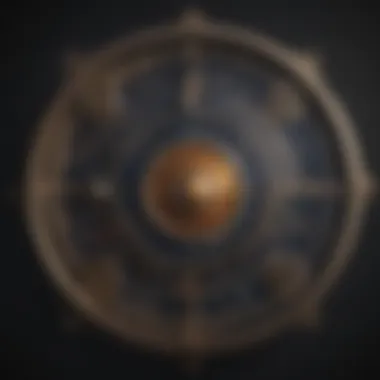
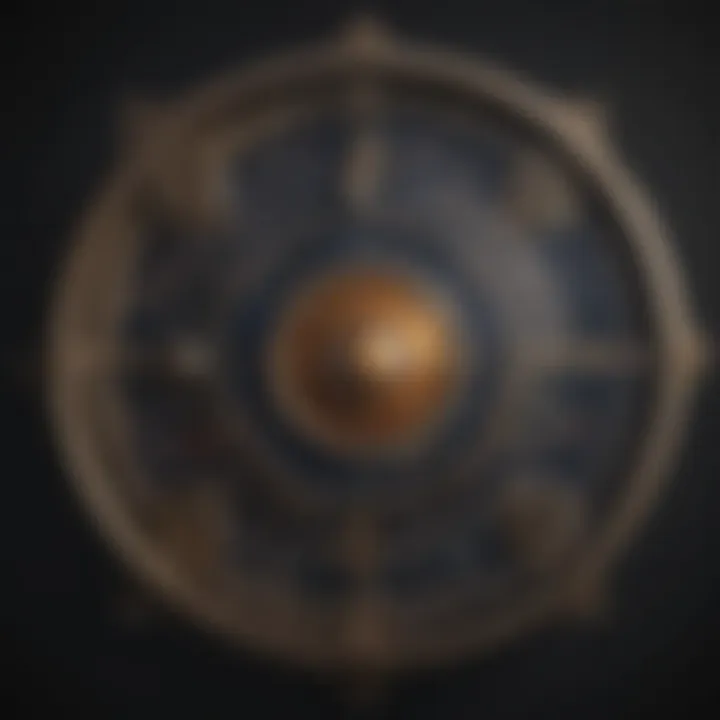
Intro
The practice of astrology has fascinated humanity for centuries. It offers insights into character, relationships, and potential life paths based on celestial positions at the time of one’s birth. Among various methods, hand-drawn horoscopes stand out for their personal touch and intricate detail. This article aims to examine the background of these horoscopes, their creation techniques, and practical interpretations for meaningful personal insights.
Understanding the Zodiac
Overview of Zodiac Signs
The Zodiac consists of twelve signs, each with unique characteristics and attributes. These signs are mapped based on the sun's position throughout the year. The twelve signs are:
- Aries
- Taurus
- Gemini
- Cancer
- Leo
- Virgo
- Libra
- Scorpio
- Sagittarius
- Capricorn
- Aquarius
- Pisces
Sign Traits and Characteristics
Every Zodiac sign has distinct traits contributing to an individual’s personality. For instance, Aries is often seen as bold and adventurous, while Taurus may denote stability and practicality. Understanding these traits helps interpret how one interacts with others and perceives the world.
Elemental Qualities
The Zodiac signs also connect to four elemental qualities—Fire, Earth, Air, and Water. Each element encompasses three signs:
- Fire: Aries, Leo, Sagittarius
- Earth: Taurus, Virgo, Capricorn
- Air: Gemini, Libra, Aquarius
- Water: Cancer, Scorpio, Pisces
These elemental qualities further influence how the signs resonate with one another, bringing depth to compatibility readings.
Astrological Insights
Current Astrological Trends
Astrology is dynamic, shifting with the motion of celestial bodies. Being aware of current planets in retrograde or significant transits can inform one’s personal and social energies at any given time. Following these trends helps provide a context for interpreting horoscopes.
Influence of Celestial Events
Celestial events, such as eclipses and solstices, hold considerable power in astrology. They can signify new beginnings, endings, or transitions. Understanding the implications of these events aids in creating personal horoscopes that hold relevance for individuals.
How to Interpret Your Birth Chart
To create a personalized horoscope, one must interpret a birth chart, which is a map of the sky at the moment of birth. This chart includes:
- The Sun sign
- The Moon sign
- The Ascendant
- The positions of planets in the houses
Each component offers insight into various aspects of life, from emotional responses to professional ambitions, tailoring interpretations to individual experiences.
Horoscope and Predictions
Monthly or Weekly Forecasts
Horoscopes often include predictions based on current celestial events. Monthly or weekly forecasts provide concise insights about what to expect in terms of relationships, career, and personal growth.
Personalized Horoscope Reading
Personalized readings involve a deep dive into an individual's birth chart, considering specific questions and areas of interest. This process results in unique insights tailored to the individual’s situation, contributing to self-discovery and empowerment.
Compatibility Readings Based on Zodiac Signs
Compatibility readings evaluate relationships based on the Zodiac signs involved. By comparing traits, elements, and planetary positions, one can discern potential strengths and challenges in relationships, guiding decisions in personal and professional contexts.
Understanding one's Zodiac signs and how they interact with the cosmos can enhance personal insight and foster growth.
This article offers a gateway into the intricate world of hand-drawn horoscopes and the deeper knowledge they provide to those willing to engage with this ancient practice.
Prelims to Hand-Drawn Horoscopes
Hand-drawn horoscopes offer a fascinating perspective on astrology. They allow individuals to connect more personally with their celestial chart. This method emphasizes the uniqueness of each person’s journey through life. By creating a horoscope by hand, one engages in a thoughtful process that promotes self-reflection and introspection. This could potentially strengthen the practice of astrology in one's life.
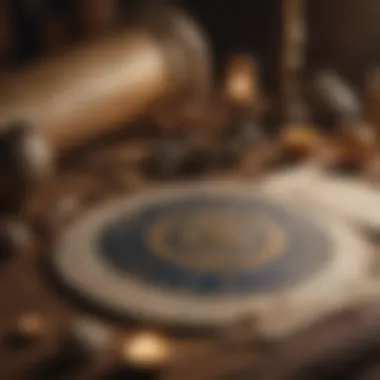
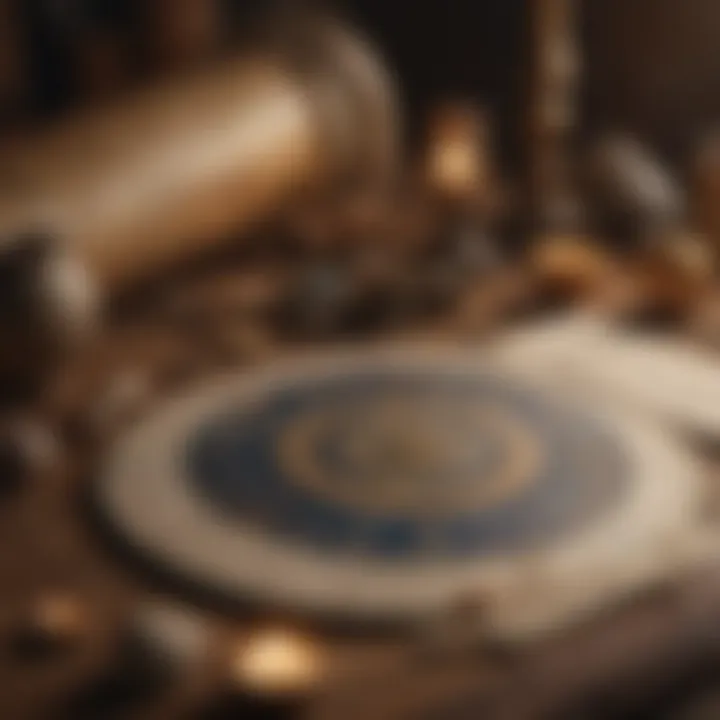
Defining Horoscope by Hand
A horoscope by hand is a personalized astrological chart drawn using traditional methods rather than generated through software. This practice requires a good understanding of astrological principles and can be seen as an artistic expression. The core elements of a hand-drawn horoscope involve the placement of planets, the Sun, and the Moon in relation to the twelve zodiac signs.
Creating a horoscope manually helps individuals appreciate the intricacies and complexities of astrology. It encourages deeper research into one's own astrological sign and influences from celestial bodies. It’s not just about lines and symbols; it’s a detailed representation of one's life potential and experiences.
Historical Context of Hand-Drawn Horoscopes
The practice of hand-drawing horoscopes is rooted in ancient traditions. Historically, astrologers used basic tools and their knowledge of the stars to create charts. This process was often labor-intensive, requiring meticulous calculations and artistic skills.
In ancient Babylon, the creation of horoscopes was linked to religious rituals and social events. The Greeks further developed these ideas, integrating philosophy into astrology. Important figures, such as Claudius Ptolemy, laid the foundation for modern astrological techniques.
During the Renaissance, horoscopes became a crucial part of court life. Nobility sought astrologers for advice. This trend highlighted the significance of astrology and how hand-drawn horoscopes were perceived as valuable artifacts.
In more recent times, the advent of digital tools has made horoscope generation easier, but hand-drawn charts remain relevant. They embody a deeper connection to the art and science of astrology. Many practitioners value these traditional methods for their personal touch and connection to the past.
The Foundations of Astrology
Astrology has a complex and layered foundation, fundamental to understanding horoscopes, both drawn and interpreted. This section dives into the core elements that underpin astrological practices. Understanding these foundations is crucial for anyone interested in creating hand-drawn horoscopes. It unveils how astrology serves as a canvas for personal insights and how tools like symbols, signs, and planetary influences interact to create a cohesive picture of one's celestial journey.
Basic Principles of Astrology
Astrology operates on a set of principles that have evolved over centuries. These principles include the belief that celestial bodies influence human behavior and events on Earth. Most notably, the positions of the sun, moon, and planets at the time of a person's birth are seen as critical indicators of their characteristics and life path. Another central tenet involves the idea of cyclical time, suggesting that planets follow predictable paths and patterns that echo human experiences. This astronomical alignment is fundamental when calculating birth charts and interpreting horoscopes.
Understanding these principles also involves recognizing that astrology is not merely a tool for fortune telling. Instead, it represents a metaphysical framework for self-discovery and personal growth. In engaging with astrology, individuals often find they are navigating their lives through deeper comprehension of their own motivations, challenges, and potentials.
Significance of Zodiac Signs
Zodiac signs hold immense significance in astrology. Each sign represents specific traits, attributes, and potential pathways influenced by planetary movements. The twelve signs, ranging from Aries to Pisces, are divided into four elements: fire, earth, air, and water. Understanding these elements helps elucidate the characteristics attributed to each sign, impacting how individuals relate to the world around them.
Astrological compatibility, challenges, and strengths may all be inferred from one's zodiac sign. Personalized horoscopes often highlight these characteristics, enabling a more tailored approach to self-understanding. The zodiac is about more than mere symbolism; it is a reflection of inherent traits that guide individuals on their life journey.
Planets and Their Influence
Planets in astrology are not merely celestial bodies; they personify specific energies and qualities that influence human affairs. Each planet possesses distinct attributes, impacting emotional, intellectual, and practical aspects of life. For example, Mars represents assertiveness and action, while Venus embodies love and harmony.
The placement of these planets in the zodiac at the moment of one's birth shapes the individual’s personality and experiences. When interpreting a hand-drawn horoscope, a clear understanding of planetary influences allows for a richer analysis of the chart. This knowledge can highlight particular strengths and weaknesses and reveal potential challenges or opportunities that could arise throughout life.
Understanding the foundations of astrology is essential for anyone looking to hand-draw their horoscopes. It gives depth to the symbols and the personal insights derived from astrological interpretations, fostering a deeper appreciation of one's celestial influences.
Tools and Materials for Hand-Drawing Horoscopes
The practice of hand-drawing horoscopes requires careful consideration of the tools and materials used. These elements are not mere preferences; they significantly influence the quality and clarity of the final chart. When undertaking this task, it is essential to choose items that not only facilitate accurate representation but also enhance the interpretive process.
Essential Materials Needed
To create a horoscope by hand, one must gather several key materials:
- High-Quality Paper: Smooth, sturdy paper is vital for clear, precise drawings. It should withstand erasing if corrections are needed.
- Drawing Tools: This includes pencils, erasers, rulers, and compasses. Pencils offer the flexibility to make changes, while compasses and rulers ensure accurate measurements.
- Astrological Reference Guides: These books or printouts should provide information on zodiac signs, planetary positions, and aspects.
- Coloring Materials: Pens or colored pencils can be used to differentiate between various elements in the horoscope. Color coding can enhance clarity and visual appeal.
- Calculator or Software: While traditionally this may involve manual calculations, some opt for software to assist with determining planetary positions before drawing.
These materials work together to create a functional and aesthetically pleasing horoscope. Without the right tools, the effectiveness of the interpretation may suffer.
Understanding Astrological Symbols
Astrological symbols form the language of horoscopes. Familiarity with these symbols is crucial for anyone engaged in hand-drawn astrology.
Each zodiac sign, planet, and aspect has a specific symbol that conveys significant meaning. For example:
- Zodiac Signs: Each sign has its own glyph which can reflect its unique characteristics. For instance, Aries is represented by a ram, symbolizing assertiveness, while Pisces is depicted as two fish, indicative of empathy.
- Planetary Symbols: The Sun, the Moon, and other planets have distinct symbols that express their astrological influence. Understanding these helps in the accurate interpretation of charts.
- Aspects: The angles formed between planets also have specific symbols, signifying various types of energy exchanges within the chart.
The interpretation process becomes richer with knowledge of these symbols. They allow for an immediate understanding of energies and relationships depicted in the chart, making them indispensable in hand-drawn horoscopes.
Having a strong grasp on astrological symbols can turn a simple chart into a comprehensive story of celestial influences and personal potential.
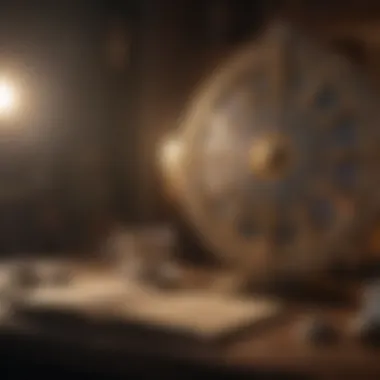
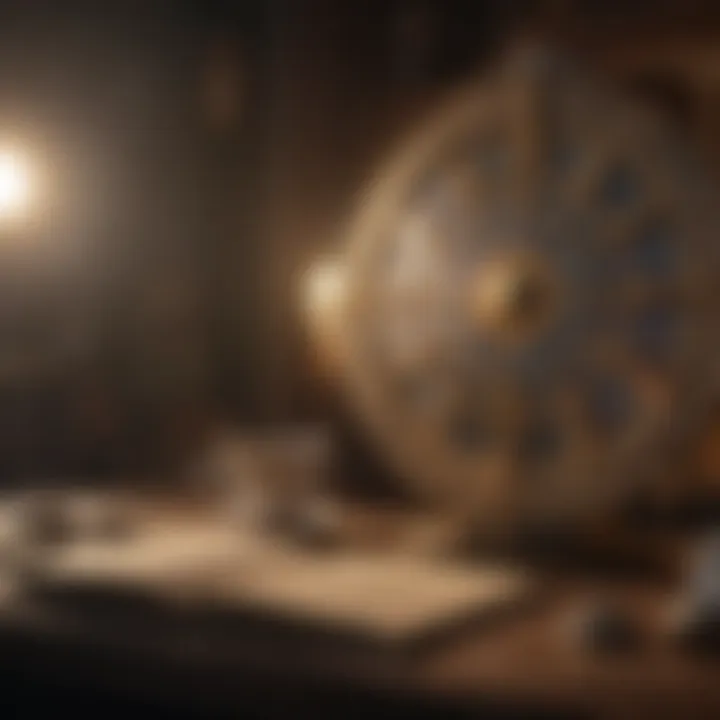
This foundational knowledge enhances the astrologer's ability to analyze charts deeply, leading to more insightful readings and personal connections to the astrological practice.
Creating a Horoscope by Hand
Creating a horoscope by hand is a vital skill for anyone interested in astrology. This method has personal value, offering an intimate connection with the celestial influences that shape our lives. The act of drawing a horoscope not only demands a clear understanding of astrological principles but also engages the individual in a synthesis of calculation, design, and personalization. The advantages of crafting a horoscope by hand include a deepened connection to one's astrological insights and the unique ability to interpret symbols through a personal lens.
Calculating Birth Chart Elements
The initial step in creating a hand-drawn horoscope involves calculating the birth chart elements. This process requires knowledge of key astrological details, including the person's date, time, and place of birth. By accurately determining these parameters, one derives the positions of the planets across the twelve zodiac signs and their respective houses.
- Date and Time: The exact moment of birth is crucial as it affects the positions of the celestial bodies. Time zones must be considered to ensure precision.
- Location: Geographic coordinates influence the rising sign and house placements in the chart.
- Zodiac Signs: It is important to recognize which zodiac signs occupy each house at the calculated moment. This understanding serves as the groundwork for interpreting chart elements.
Ensuring accuracy in these calculations lays the foundation for a detailed and insightful horoscope.
Chart Layout and Design
After birth chart elements are calculated, focusing on the chart layout and design is essential. A visually organized chart improves clarity and accessibility for interpretation. Various styles exist for layouts, but the traditional circular chart remains popular.
- Circle Division: The circle is divided into twelve sections, each representing a distinct house, with equal space allocated for each.
- Planetary Placement: Symbolic representations of planets are drawn within this layout based on calculated positions. Their placement affects the interpretation of aspects between celestial bodies.
- Zodiac Symbols: Incorporating zodiac symbols enhances the chart’s visual appeal. Each sign comes with its own unique iconography which aids in quick identification.
Meticulous attention to layout creates a readable chart that enhances the act of interpretation.
Translating Raw Data into Chart Format
Translating raw astrological data into chart format is the final step in creating a hand-drawn horoscope. This transition is where analytical skills come into play, transforming numerical calculations into an illustrative form.
To achieve this, one must:
- Gather Calculated Positions: Compile all positional data for planets and houses. This data should include degrees and angles, derived from the earlier calculations.
- Use Astrological Symbols: Representing each planet and house with its corresponding symbol allows for quick visual references.
- Connect Aspects: Drawing lines between planets that form angles will representation their relationships. This is crucial for understanding the dynamics present in a chart.
Correctly translating data not only provides a useful tool for personal insights but also fosters an appreciation for the intricacies and details of astrology.
“Creating a hand-drawn horoscope is a journey of exploration, combining knowledge, artistry, and personal insight.”
Interpreting Hand-Drawn Horoscopes
Interpreting hand-drawn horoscopes is crucial for understanding the insights embedded within the chart. This process allows astrologers to derive meaning from the cosmic alignments depicted in the chart. Readers can unlock personal and relational insights, thus deepening their appreciation for astrology as a meaningful tool for self-discovery.
Reading the Chart
Effective reading of a hand-drawn horoscope involves several steps. First, one must familiarize oneself with the key components: the houses, signs, and aspects. The layout typically consists of twelve houses that correspond to various life areas, from relationships to career paths.
To start the reading, position matters. The Ascendant, often referred to as the rising sign, indicates the persona presented to the world. It is crucial to look at the sign that falls in the first house, as it specifies how one interacts with others.
Here are essential elements to focus on:
- Positions of Planets: Each planet carries its meaning and energy. For example, Venus in the fifth house might indicate a penchant for creativity or romance.
- Signs on the Cusp: The cusp of each house indicates how the planetary influences manifest in that sector of life.
- Aspects: The angles between planets can reveal how energies clash or harmonize.
These factors combine to paint a fuller picture of an individual’s astrological makeup. Precise interpretation requires attention to details such as the house placements and planetary dignities. This meticulous approach scales from recognizing dominant influences to isolate subtle energies that affect one’s life experiences.
Understanding Aspects and Transits
Aspects describe the relationship between the planets and hold significant weight in chart interpretation. They can be either harmonious or challenging and inform how the energies of planets interact. The common aspects include conjunctions, squares, trines, and oppositions.
- Conjunctions reveal a blending of energies. For example, if two planets are in conjunction, they strengthen each other’s influences.
- Squares indicate tension and conflict. If there's a square aspect, one must address the challenges it represents.
- Trines symbolize ease and support. Trine aspects often denote areas where energies flow effortlessly.
- Oppositions suggest a need for balance. They can reveal polarities that require integration.
Transits, on the other hand, describe the current positions of planets relative to those in one’s natal chart. They are essential for understanding personal development over time. Tracking transits allows astrologers to forecast potential influences and prepare for upcoming challenges or opportunities.
In summary, mastery in interpreting hand-drawn horoscopes involves attention to detailed components including reading the chart, recognizing aspects, and understanding transits. This combination fosters a deeper understanding of oneself and the celestial influences at play.
Astrological Compatibility Analysis
Astrological compatibility analysis is a central theme in the study of horoscopes. It holds great significance, especially when it comes to understanding personal relationships. This section unpacks the primary elements of compatibility through the lens of astrological charts and emphasizes the nuances that make this analysis both distinct and valuable.
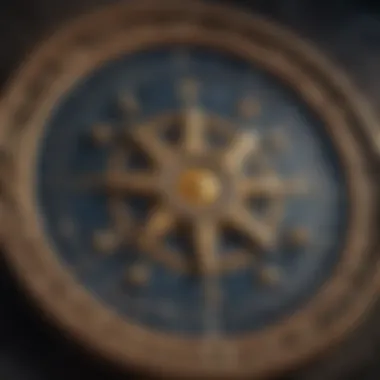
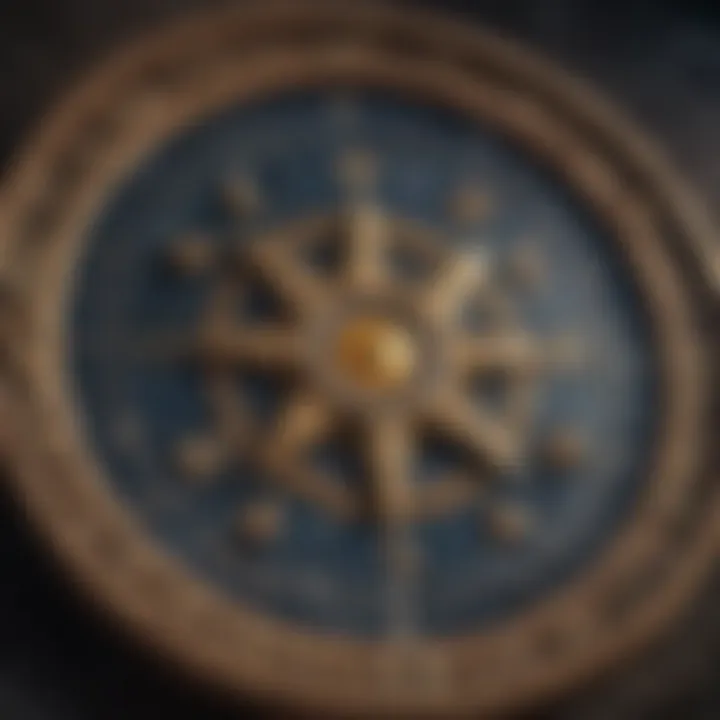
Analyzing Relationships through Horoscopes
The complexity of human relationships can often be challenging to navigate. Horoscopes serve as a tool to illuminate the underlying dynamics of personal connections. Analyzing relationships through horoscopes involves examining the birth charts of the individuals involved, taking into consideration the positions of the planets, zodiac signs, and houses.
When two people’s charts are compared, astrologers look for certain aspects:
- Sun Sign Compatibility: This is often where initial attraction lies, as it reflects core personality traits.
- Moon Sign Compatibility: The moon sign represents emotions and instincts, crucial for understanding emotional connections.
- Venus and Mars Placements: These elements reveal how one expresses love and passion, providing insights into romantic dynamics.
Each of these components offers insights into how two individuals might relate. A thorough analysis highlights strengths and challenges, allowing astrologers to offer personalized guidance.
Key Factors in Compatibility
Compatibility analysis dives deeper than just sun sign matches. Several key factors must be considered to obtain a full picture:
- Elemental Relationships: The four elements - fire, earth, air, and water - each exert their influence, affecting how signs interact. For example, fire signs usually thrive on movement and excitement, while earth signs prioritize stability.
- Modalities: There are three modalities - cardinal, fixed, and mutable. These modalities dictate how individuals express their energies. Understanding this helps in predicting potential conflicts.
- Challenging Aspects: Certain interactions between planets can create tension. For instance, a square (90-degree angle) often leads to friction, while trines (120 degrees) indicate harmony.
- Synastry and Composite Charts: Synastry involves overlaying two charts to inspect interactions, whereas composite charts create a single chart that represents the relationship itself. Both tools provide a deeper insight into the connection between two individuals.
Understanding compatibility through astrological analysis enriches our appreciation of human relationships. It shows us that every connection has its unique rhythm and complexities.
Celestial Events and Their Impact
Celestial events play a crucial role in astrology, particularly in the practice of hand-drawn horoscopes. Understanding how these events influence personal and collective experiences enriches the insights individuals gain from their charts. This section delves into the significance of moons and retrogrades, along with the practical aspects of planning around astrological events.
The Significance of Moons and Retrogrades
The moon cycles through various phases, influencing emotions and instincts. Each phase carries specific energies that affect individuals uniquely based on their astrological makeup. For example, the New Moon often symbolizes new beginnings, providing a perfect opportunity to set intentions. Conversely, the Full Moon is associated with culmination, revealing results of past efforts.
Retrogrades, particularly Mercury retrograde, are significant in astrological practice. During retrogrades, planets appear to move backward in their orbit. This phenomenon is known to cause communication issues, misunderstandings, and a tendency to reassess past decisions. Astrologers emphasize the importance of being cautious when starting new ventures or making significant decisions during these periods.
Contemporary Relevance of Hand-Drawing Horoscopes
The modern practice of astrology has seen a resurgence in interest as people seek personal insights through horoscopes. Hand-drawn horoscopes, in particular, offer a tangible connection to this ancient practice. They stand out in a world increasingly dominated by digital technology. The importance of hand-drawn horoscopes lies in their ability to provide a personalized touch and foster deeper engagement with astrological concepts.
The Digital Versus Hand-Drawn Debate
The discussion surrounding digital versus hand-drawn horoscopes is prevalent among astrological circles. Digital tools provide speed and convenience. They can generate charts almost instantaneously. However, this convenience often lacks the personalized connection of manual drawing. Each stroke of the pen or pencil can hold meaning. It invites creators to invest themselves in the process.
Many practitioners argue that hand-drawn horoscopes encourage a deeper understanding of astrology. By engaging in the physical act of drawing, astrologers often find themselves more attuned to the symbols and meanings they represent. This not only enhances their skills but also enriches their insights into individual charts.
Hand-drawn horoscopes invite practitioners to become active participants in their astrology journey.
Maintaining Traditional Practices in Modern Astrology
Even with the rise of digital alternatives, traditional practices remain relevant. There is a notable interest in preserving the historical techniques that have shaped astrology. Many believe that these methods offer an authenticity that cannot be replicated through software.
Continuing to practice hand-drawing horoscopes offers several benefits:
- Skill Development: Engaging manually builds foundational knowledge of astrological principles.
- Personal Connection: Hand-drawn charts foster a sense of ownership and personal involvement.
- Cultural Significance: Maintaining these practices honors the rich history of astrology.
Despite the efficiency of digital methods, many in the astrology community stress that hand-drawing enables deeper reflection. It also allows practitioners to explore their creativity in interpreting their charts. Therefore, blending traditional practices with modern tools can yield a more enriched astrological experience.
Epilogue and Future Directions
Understanding hand-drawn horoscopes encompasses not just a practical skill but also a transformative journey into one's self. The practice of creating a personal horoscope by hand provides unique insights that can empower individuals in their decision-making processes. Not only does it deepen one's connection to the cosmos, but it also enriches the overall experience of astrology.
Summarizing Key Insights
Throughout the exploration of hand-drawn horoscopes, we find that several key insights emerge:
- Personalization: Each hand-drawn chart reflects personal choices, making it a unique representation of the individual’s astrological influences.
- Historical Significance: The historical context and practices surrounding hand-drawing horoscopes reveal much about the evolution of astrology.
- Methodological Understanding: Learning the specific techniques involved in calculating and drawing charts enhances the understanding of astrological symbols and their meanings.
- Interpersonal Connections: Compatibility analysis, informed by personal horoscopes, facilitates deeper understanding in relationships.
This synthesis highlights the value of hand-drawn horoscopes in enhancing personal insight and self-discovery. The tactile nature of this approach, contrasted with digital methods, can provide a richer, more engaged experience in understanding one's astrological influences.
Further Exploration in Astrology
The journey into astrology is far from over. For those interested in delving deeper, the following areas can provide extensive avenues for exploration:
- Astrological Research: Investigate ongoing studies in astrology that examine various traditions and their applications.
- Astrology Workshops: Participate in workshops or classes that focus on the art of hand-drawn horoscopes, enhancing both technique and knowledge.
- Online Communities: Engage with resources on platforms like Reddit (reddit.com/r/astrology) or Facebook groups for shared insights and support.
- Astrological Software: Explore various software that assists in drawing horoscopes, but retain the hand-drawn method for a balanced approach.
As the interest in astrology continues to grow, the methods and practices surrounding it will evolve. Hand-drawn horoscopes represent both a connection to the past and a pathway toward future explorations in this ancient art. The future holds promise for those willing to embrace both traditional and contemporary aspects of astrology.







